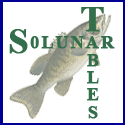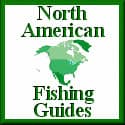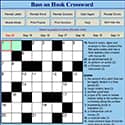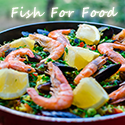Bass on Hook is Supported by our readers. As an Amazon Associate We earn commissions from qualifying purchases. For more informtion read our Amazon Affiliate Disclosure and Affiliate Disclosure Policies.
Steelhead on The Fly
By Paul Smith

An accomplished steelhead angler is a person who has acquired the patience that comes through many failures and few rewards.
Both lead us to become a student of searching for the ultimate freshwater experience.
Each one represents long hours and personal triumphs or disappointments of the angler.
It is through these experiences that we learn different techniques and tools that lessen the odds in favor of the fish.
There are as many different techniques for catching steelhead as there are anglers.
Some techniques work better on certain streams than others due to different elements created by Mother Nature.
The thing to remember is that you must survey each situation to determine what elements exist and adjust your techniques accordingly.
One technique is tying some thread and feathers onto a hook and then casting the fruits of your labor into a long glide or riffle and watching the line tighten towards the tailout of the pool.
Summer And Winter Steelhead on The Fly
Anglers who are new to summer and winter steelhead flyfishing will discover that there is a completely new set of elements to consider compared to flyfishing for trout.
One is that steelhead are anadromous, which means they grow up in saltwater and return to freshwater to spawn.
Once in freshwater their body chemistry changes to suppress their ability to feed in order to make room for holding eggs or developing milt.
In other words, they don't actively feed like trout so the question begs asking, "Why do they hit a fly properly presented to them?"
The belief that is widely accepted by most anglers is their reactions are instinctually conducive to growing up as fry feeding on insects.
Having said this of course, we steelheaders have caught steelhead on roe and a worm under certain conditions.
Reading The Water For Steelhead on The Fly

The first lesson a steelheader learns when flyfishing his or her favorite river is how to read the water.
You will look for water that provides safety and comfort for steelhead.
These are usually the pools or low gradient riffles with large rocks or stumps where a steelhead can rest while heading for its natal spawning grounds.
Once you find these areas you should be able to come back the following year and find fish holding in the same spot.
Fishing a river when it is at low water levels is a good way to understand the river bed for when you come back at higher water levels.
Look for defining features like big rocks, trenches, deep pools with a large tailout etc.
When fishing pools, look for areas like the white water head, the main part of the pool and the tailout.

The rule of thumb is that the head will hold 20% of the fish, the pool itself will hold 20% of the fish and the tailout of the pool will hold 60% or more of the fish.
Never overlook the additional holding areas such as undercut banks, log jams and any other creation that changes the water flow.
Anytime an object is placed in the path of water there is a scouring effect that creates a pool on both sides of the object as the water rushes around or over the object.
This creates slower water immediately below the object where steelhead can rest.
Part of reading the water is understanding why certain factors can change how a steelhead will react to your fly.
Three Important Factors to Reading The Water
Three of the more important factors are water levels, water color and water temperature.
Water Levels
Water levels can influence greatly your success or lack thereof when flyfishing for steelhead.
If the water level is low, the steelhead will spook easily because they can see you and your gear quite clearly.
Here you should always fish from the head of the pool first (reverse the 20/20/60 rule) and use a longer leader with as light a tippet as you can get away with.
If the water level is medium, you should still be careful when approaching a pool and fish it with a little heavier leader and tippet than you would use for lower levels.
If the water level is high, you should be able to approach the river without as much stealth as the first two levels and start at the tailout.
Water Color

If the water is colored your chances of success will increase especially during medium to high flows.
Just like fishing for trout, presentation is crucial for success.
You must present your fly immediately in front of the steelhead to entice him to strike, especially in colder water temperatures and to a lesser extent in warmer water.
Steelhead are very selective in what they will strike at so your presentation must be perfect.
The secret is to keep your gear near the bottom!
When flyfishing winter steelhead in medium colored water for example, a fast sinking wet tip line with a short leader (2-3ft) will give you a good presentation for your flies.
Using variations of bright colored medium to larger flies when the water color is dark and dark colored medium to smaller flies when the water is clear should bring you some success and help you to determine a popular fly for your body of water.
Spey rods are ideal for steelhead flyfishing as they allow for heavier lines and longer casts.
They are also a more difficult cast so practice makes perfect here.
Prepare yourself for different water conditions that can occur during the course of a day by having a variety of gear pre-tied.
Water Temperatures
Water temperature is also important as steelhead become lethargic at temperatures less than 8 (40 F) degrees Celsius.
The majority of steelhead will not strike at your presentation at all.
For this reason it is important to cast back into the same spot where you just had a bite as chances are the steelie will take it again if placed in the same drift as the first pass.
There are always fish that will take your presentation and these are the fish you are seeking out.
Most steelhead travel up stream during cloudy, overcast or rainy days.
This allows you to fish the first pools of the day again.
The tides can also influence steelhead leaving the ocean and entering river systems.
Fresh steelhead are usually caught in the lower sections of rivers shortly after the flood tide starts to move.
Always fish early mornings and both tide changes.
This will change as the season progresses.
The fish see more tackle while moving further up the system and get harder to catch.
The full moon is usually not a good time to fish for steelhead, but shortly after it can get hot.
To Sum Up Steelhead On The Fly
Flyfishing for both summer and winter steelhead is a challenge that is very rewarding once you learn the art.
There are more effective techniques like bottom bouncing, drift fishing, using spinners and spoons.
But there is no feeling like it when you catch a beautiful silver steelhead on a fly that you yourself created and presented to perfection similar to how Mother Nature herself would do it!
So get out there, be patient, have fun and learn!
Thanks!
Paul
If you have a question or comment for Paul please feel free to send it via our Pro Staff Question And Answer form.
Your questions will be answered within 24-48 hours by Paul.
Look for other articles written by Paul Smith in Paul's Pro Staff Angler Profile










